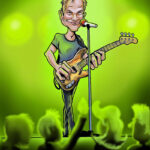If you think you have a handle on control networks, good for you. Computer networking is a big field of study, with a wide range of certifications and career opportunities for those who can keep all the bits and bytes straight when it comes to digital connectivity.
Network administration and configuration is not for the faint of heart, however. With today’s systems, it takes more than just the right IP address and gateway setting. Setting things up properly also now goes far beyond simply plugging the console in and making sure the correct DMX cable is in the right DMX output.These days, the first step is to give the console power and plug in a single Ethernet cable to connect it to a whole host of other networked devices on the network. The need for skill comes in when you are configuring the console to talk with all those other devices.
Updated Book, New Title
Reflecting the rise in sophisticated networks now controlling shows, John Huntington has not only updated but renamed his popular book, Control Systems for Live Entertainment. Its new title: Show Networks and Control Systems. (Huntington also threw out the old approach to getting the book in print; instead of working with a traditional publisher, he self-published the title through Amazon’s CreateSpace.)
For those who would rather not hack their way through a jungle of networking jargon and acronyms on their own, Huntington steers the novice through the different protocols, configurations and methodology now being used to let a lighting console to properly “talk to” its peers on a show network.
Along with lighting, Huntington covers all the things today’s show production control networks connect with, including lasers, pyro, architectural systems and yes, even sound.
Noting how the various control elements of even the most complex production can communicate as one, Huntington explains the various types of show control protocols like MIDI (Musical Instrument Digital Interface), MIDI Show Control (MSC), MIDI Machine Control (MMC), timecode, Open Sound Control (OSC) and various sub-protocols.
The Learning Curve
At 492 pages, and with AHAOATAY (a huge amount of acronyms thrown at you), you may feel like this is just another computer networking book for dummies that you set aside after reading the introduction. If you have a passion for the technical side of the entertainment industry and the drive to understand how a system comes together, however, you’ll find that those 492 pages go by rather quickly.
Huntington mentions in the introduction that the book will read like a textbook. Can you blame him? He is, after all, a professor of entertainment technology. Who better to write a book about the subject than someone who is practicing in the industry and also knows the teaching method needed for students to comprehend such a topic?
Laying out the book in textbook format also makes it easy to understand. Huntington breaks down the content into manageable chunks. He starts off with the philosophy behind networking and then gets into more advanced subject matter as the book progresses.
Huntington has also produced training videos that accompany each chapter of the book. These are accessible online at his website, controlgeek.net.
Conclusion
Although I had some knowledge of control protocols and how to set up simple networks before starting Huntington’s book, I now have a better idea of all the protocols we use in our industry and how they co-exist.
If you have an interest in furthering your education and understanding the workings of networks in our industry, follow the link below to get Huntington’s book.
For the novice, Show Networks and Control Systems serves as a great foundation for understanding this complex topic. For the expert, it can serve as a valuable refresher.
Show Networks and Control Systems*
by John Huntington
Retail Price: $50
Publisher: Zircon Designs Press
Pages: 492
To order, go to plsnbookshelf.com, or to
http://plsn.me/ShowNetworksBook
*Formerly titled Control Systems for Live Entertainment


